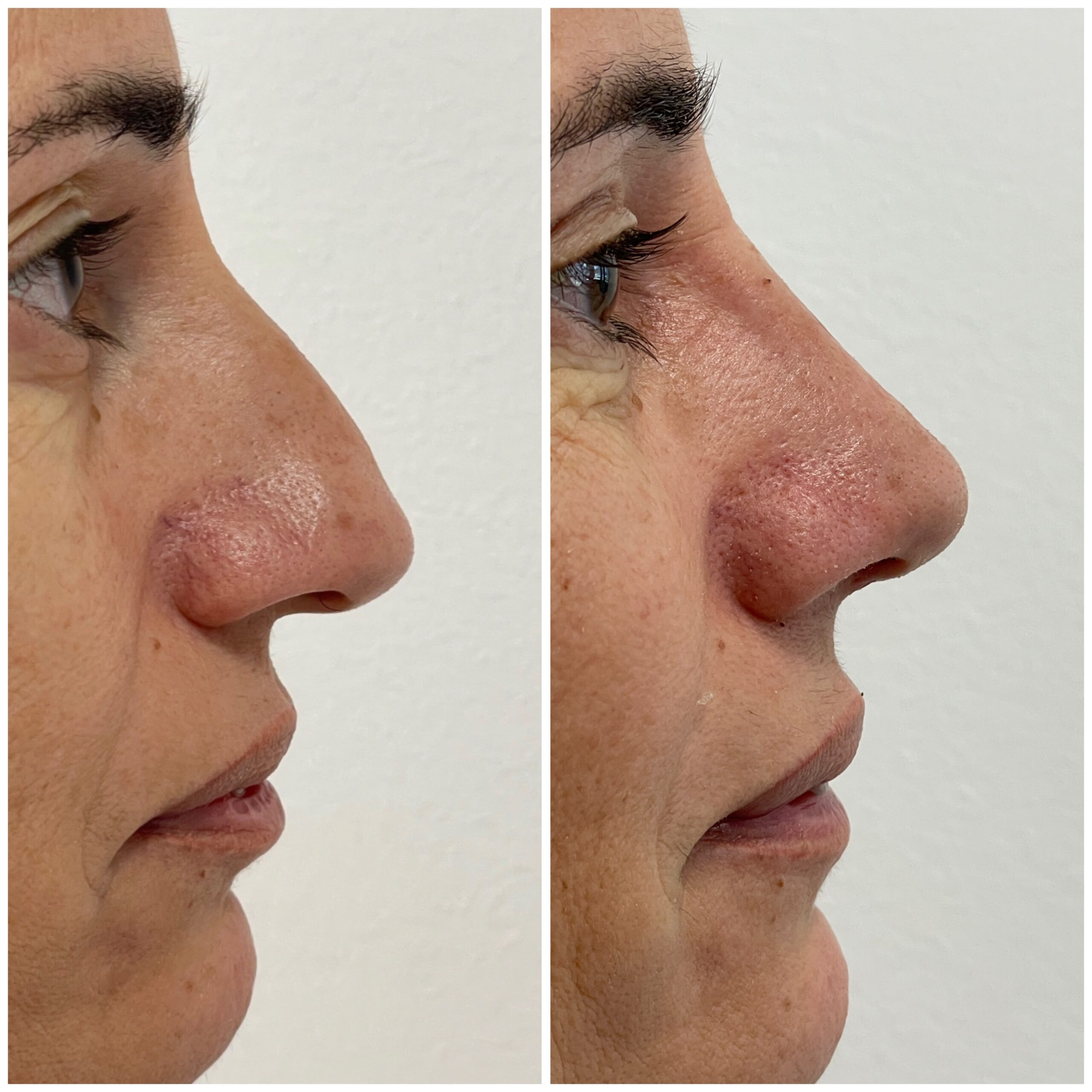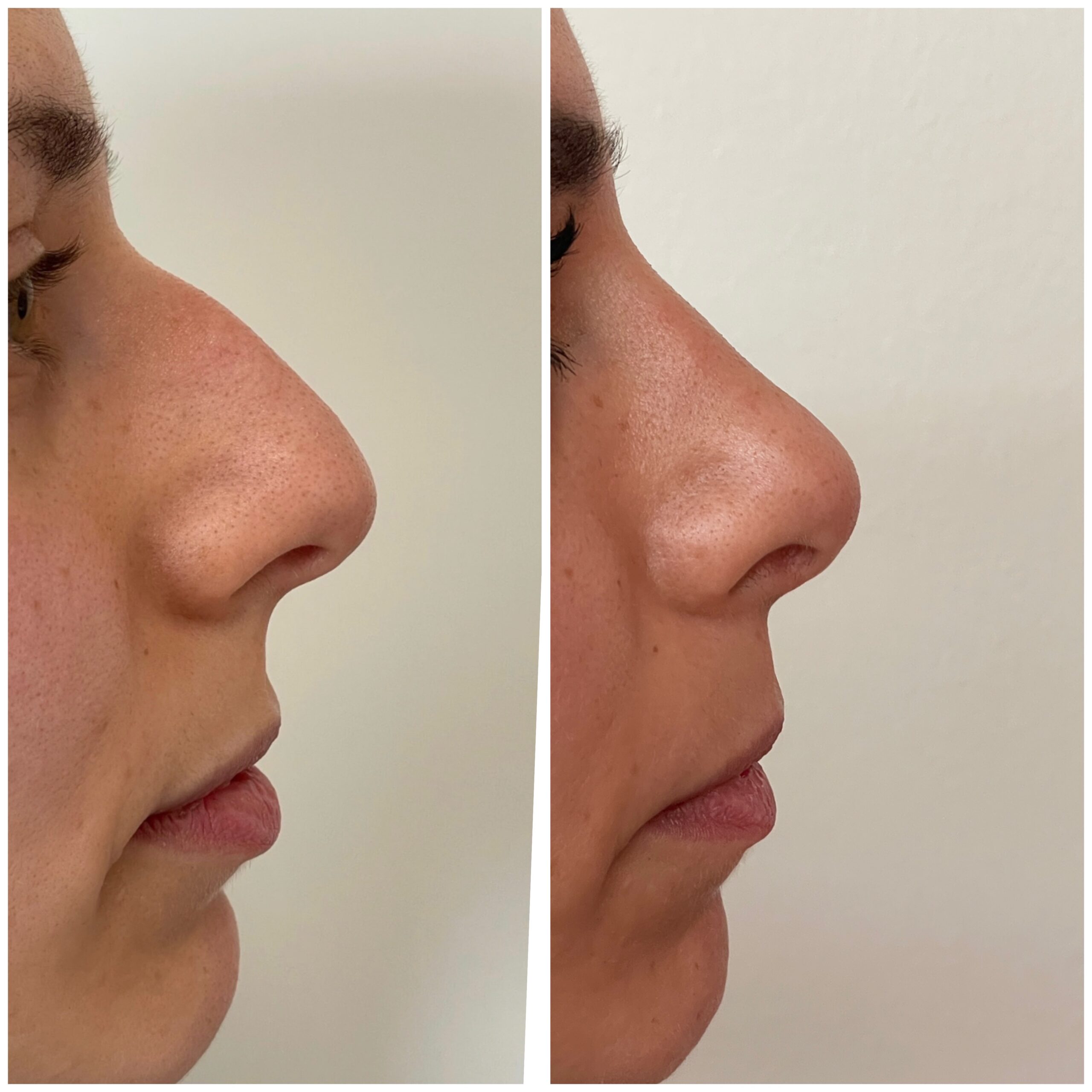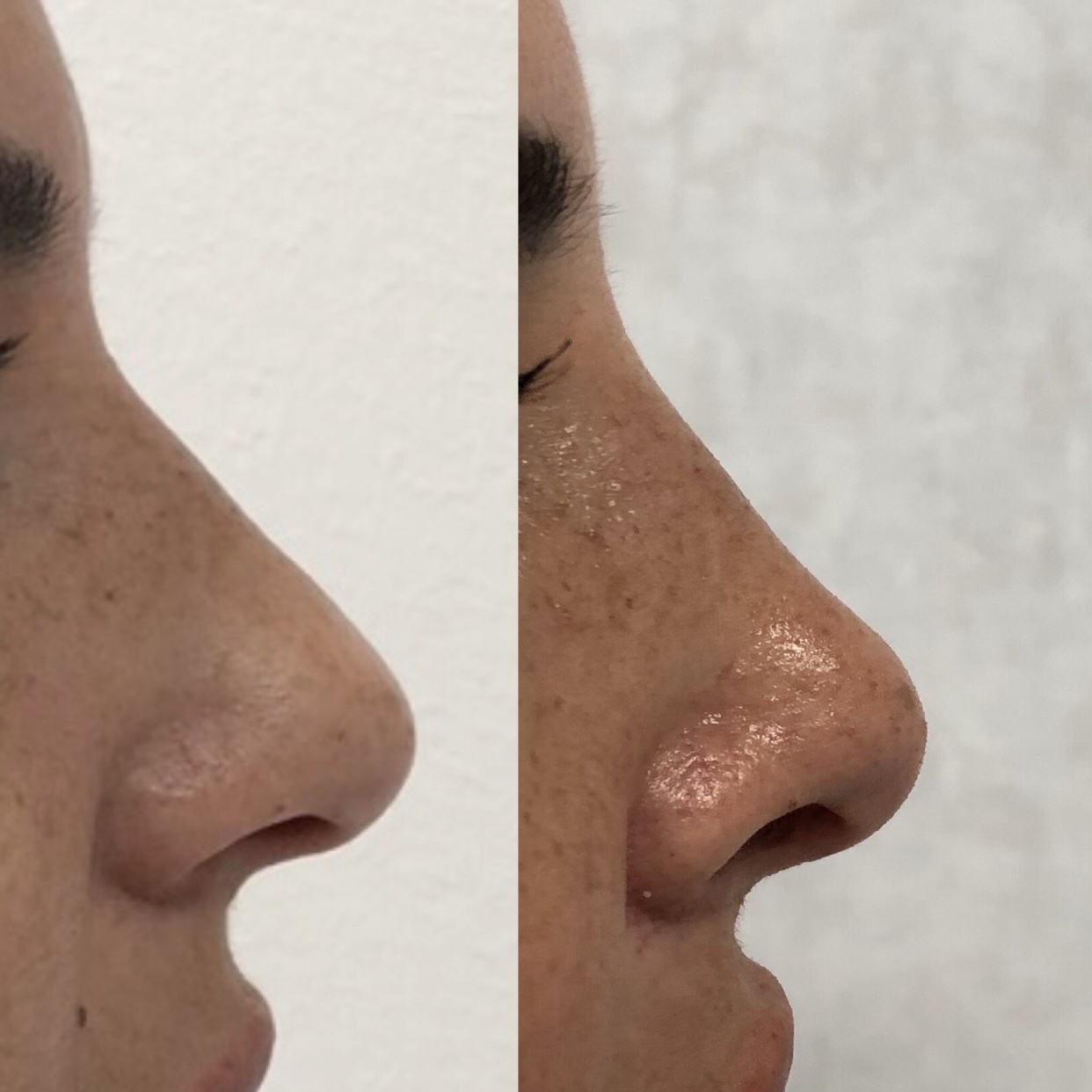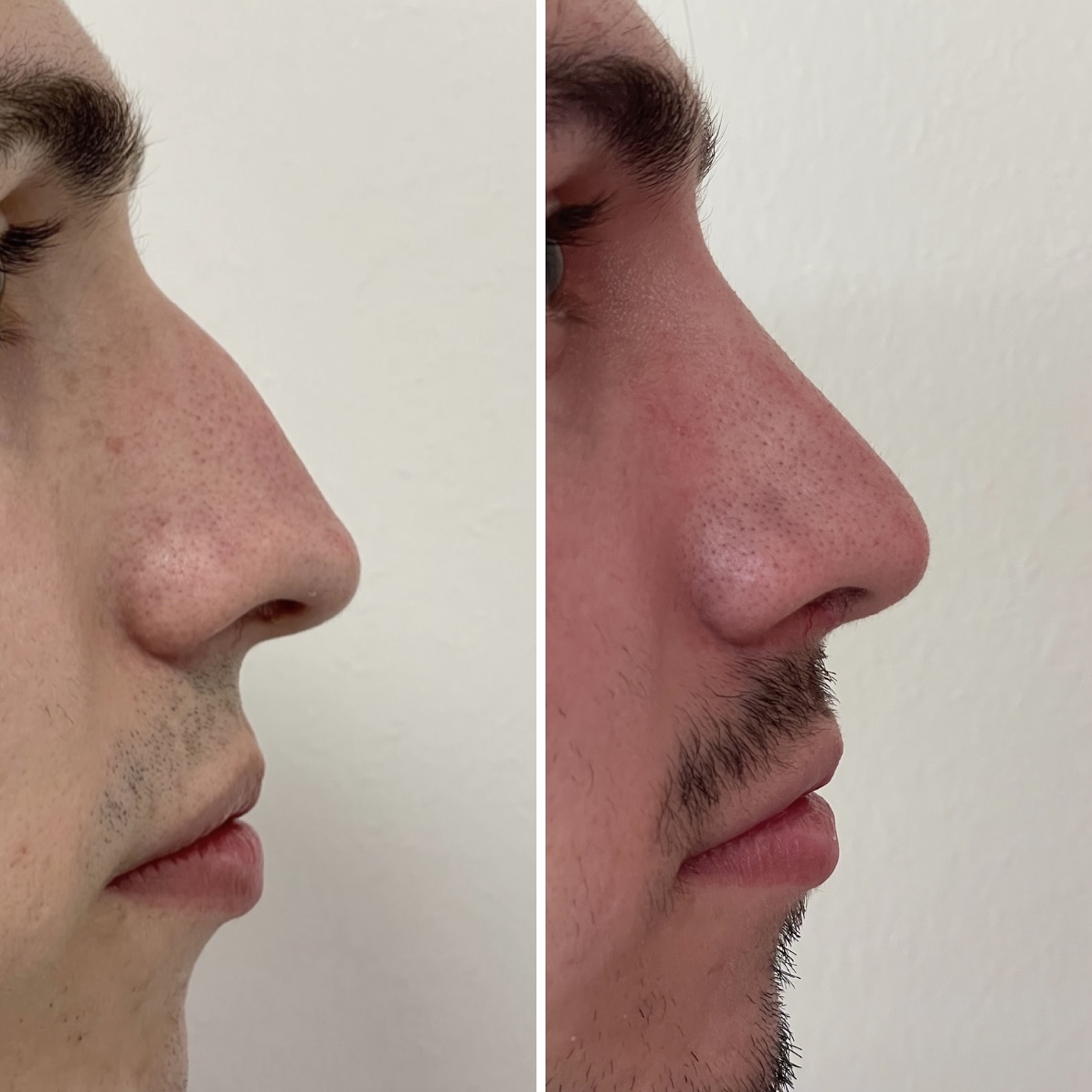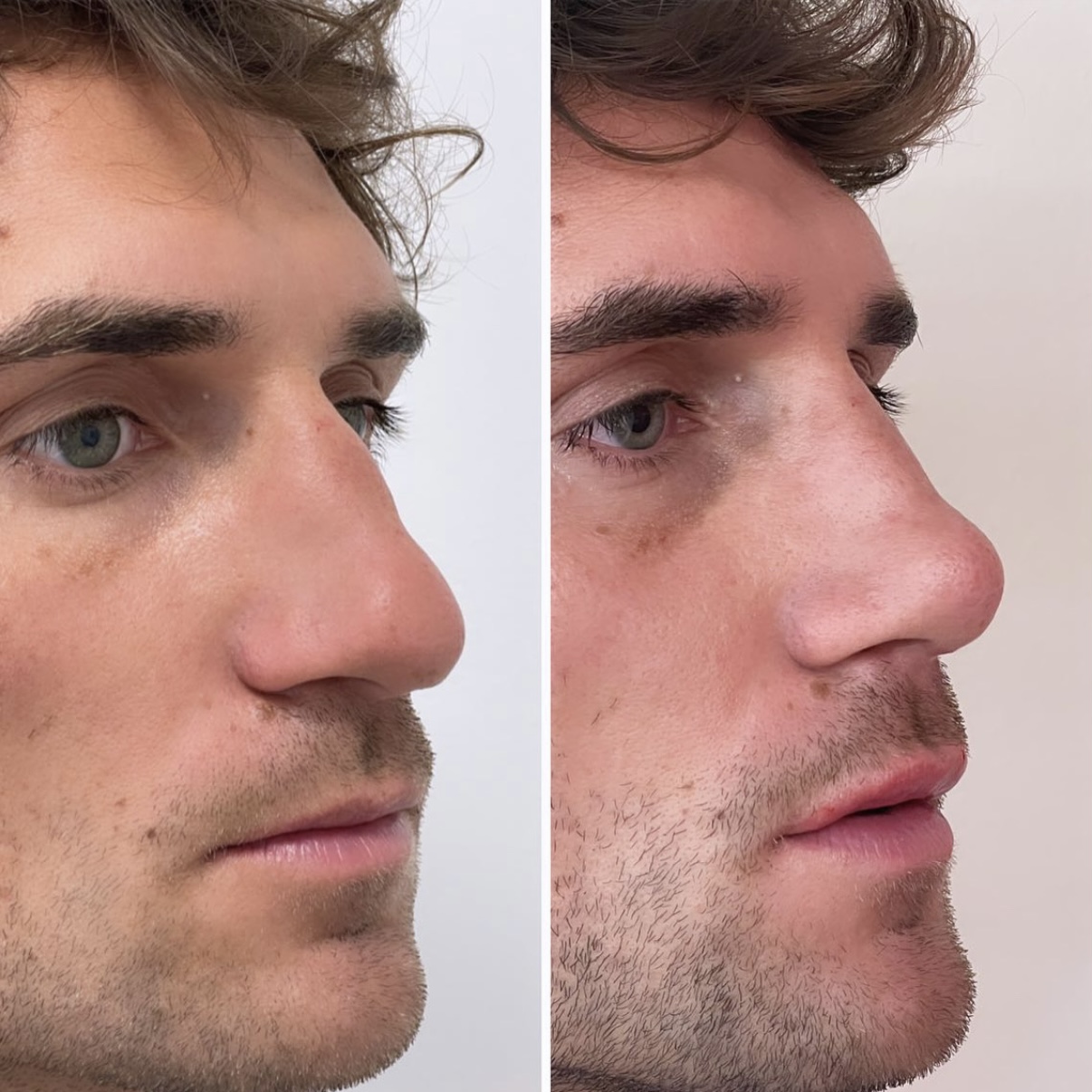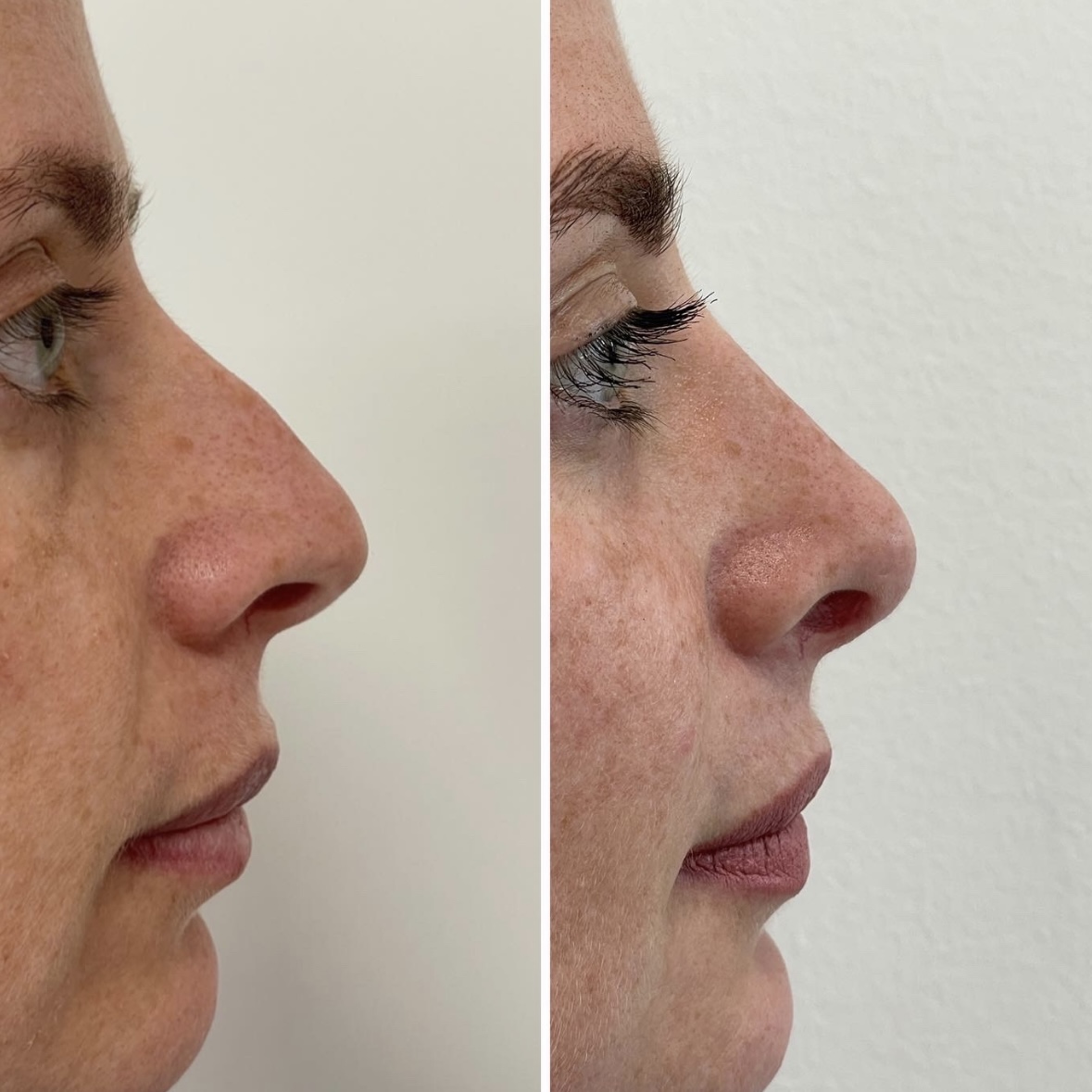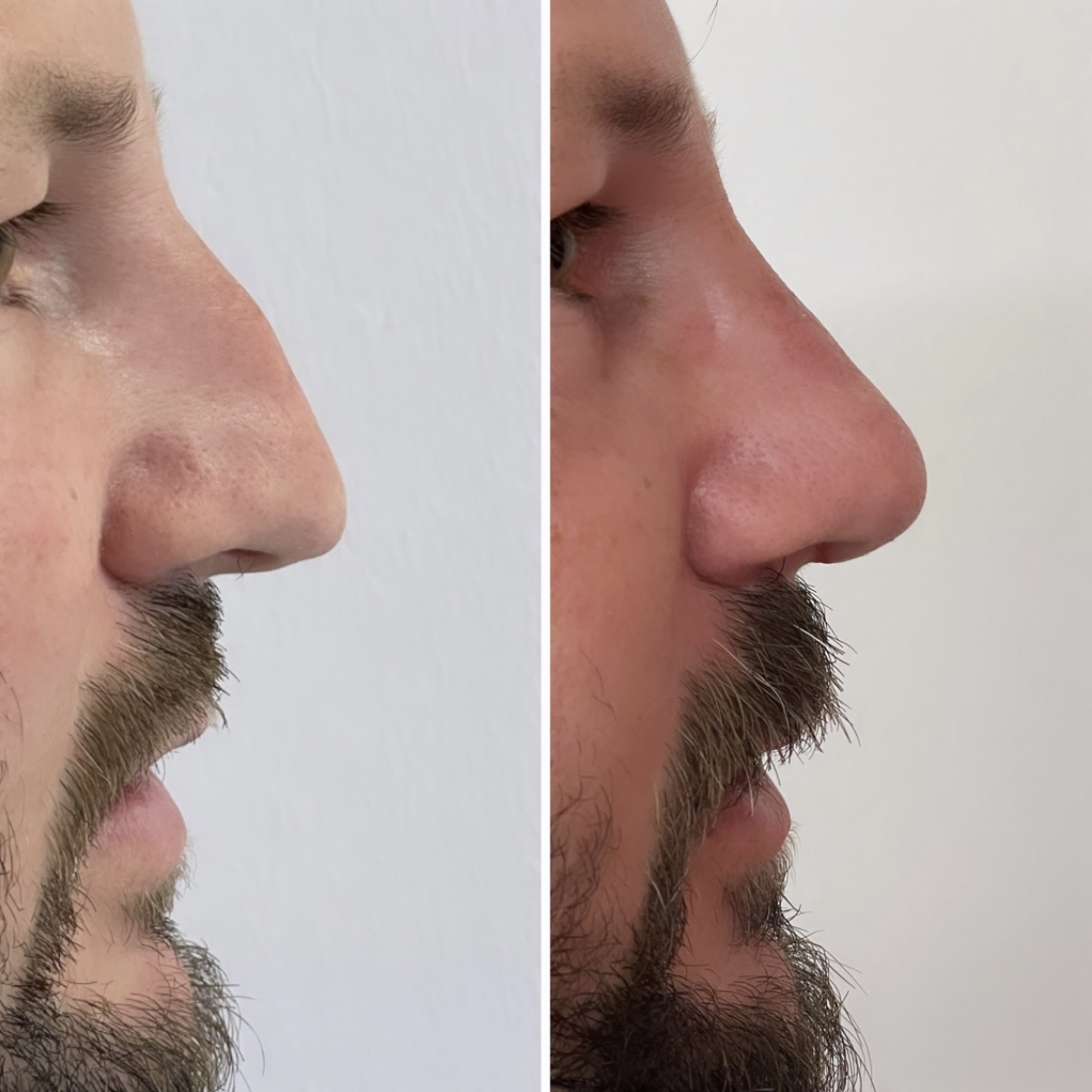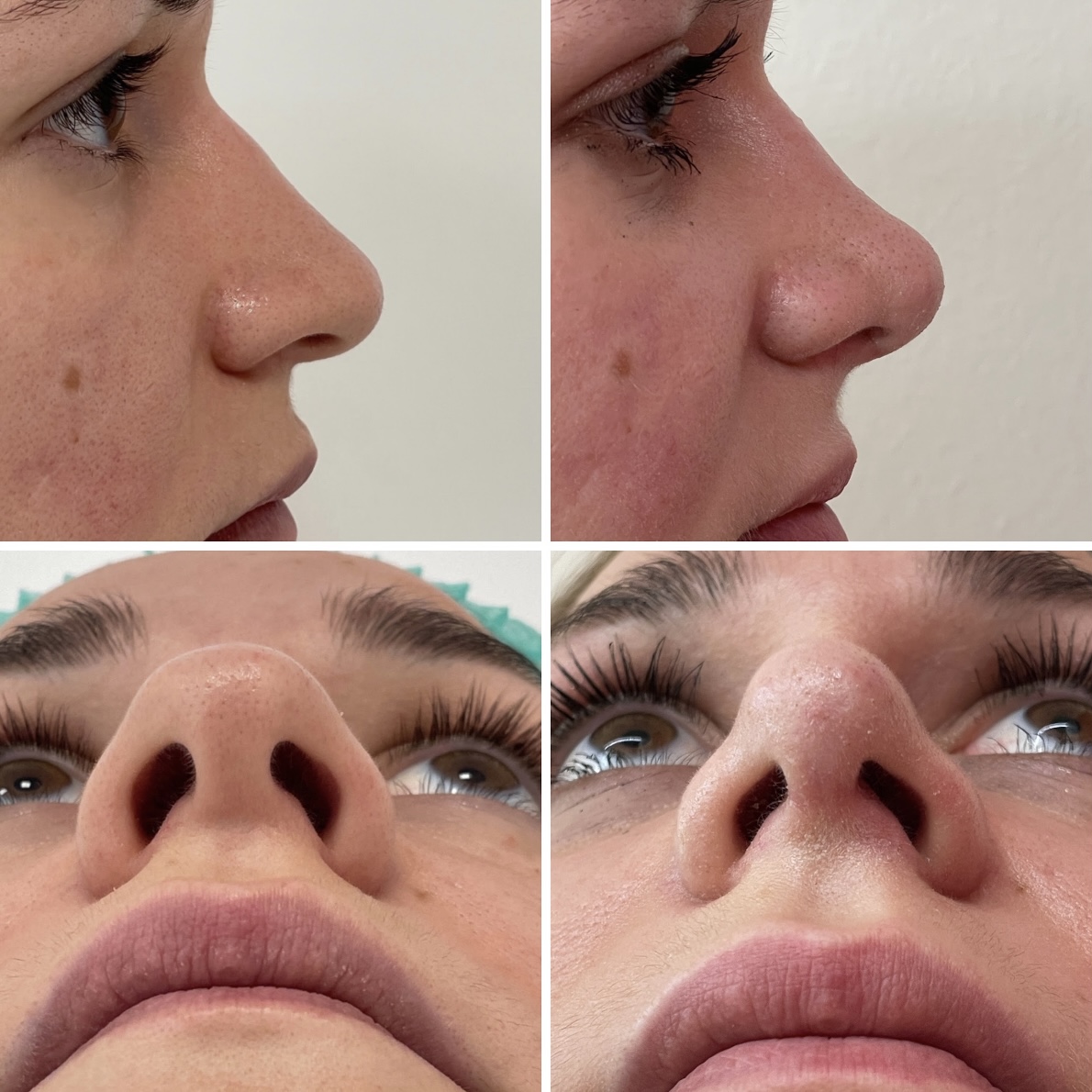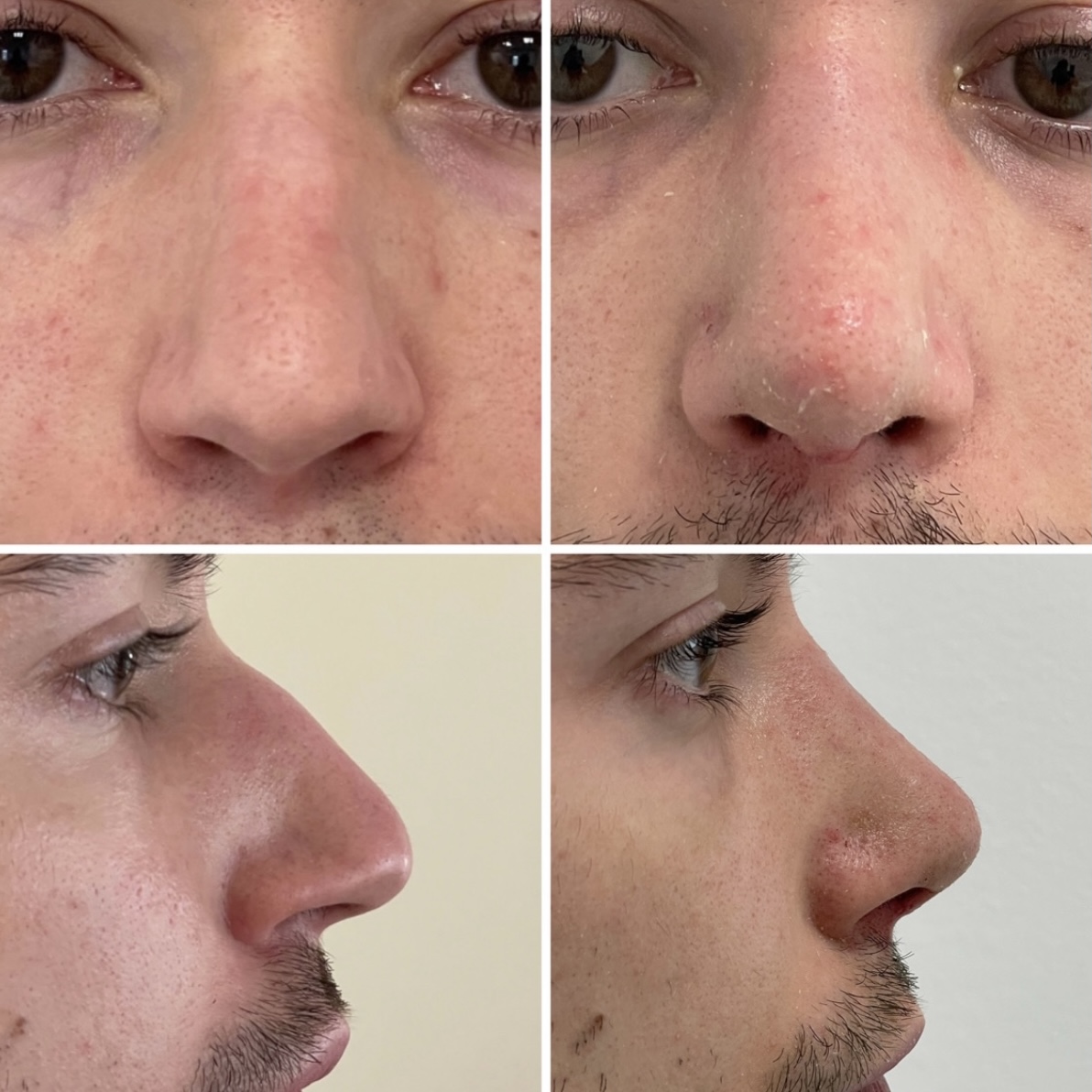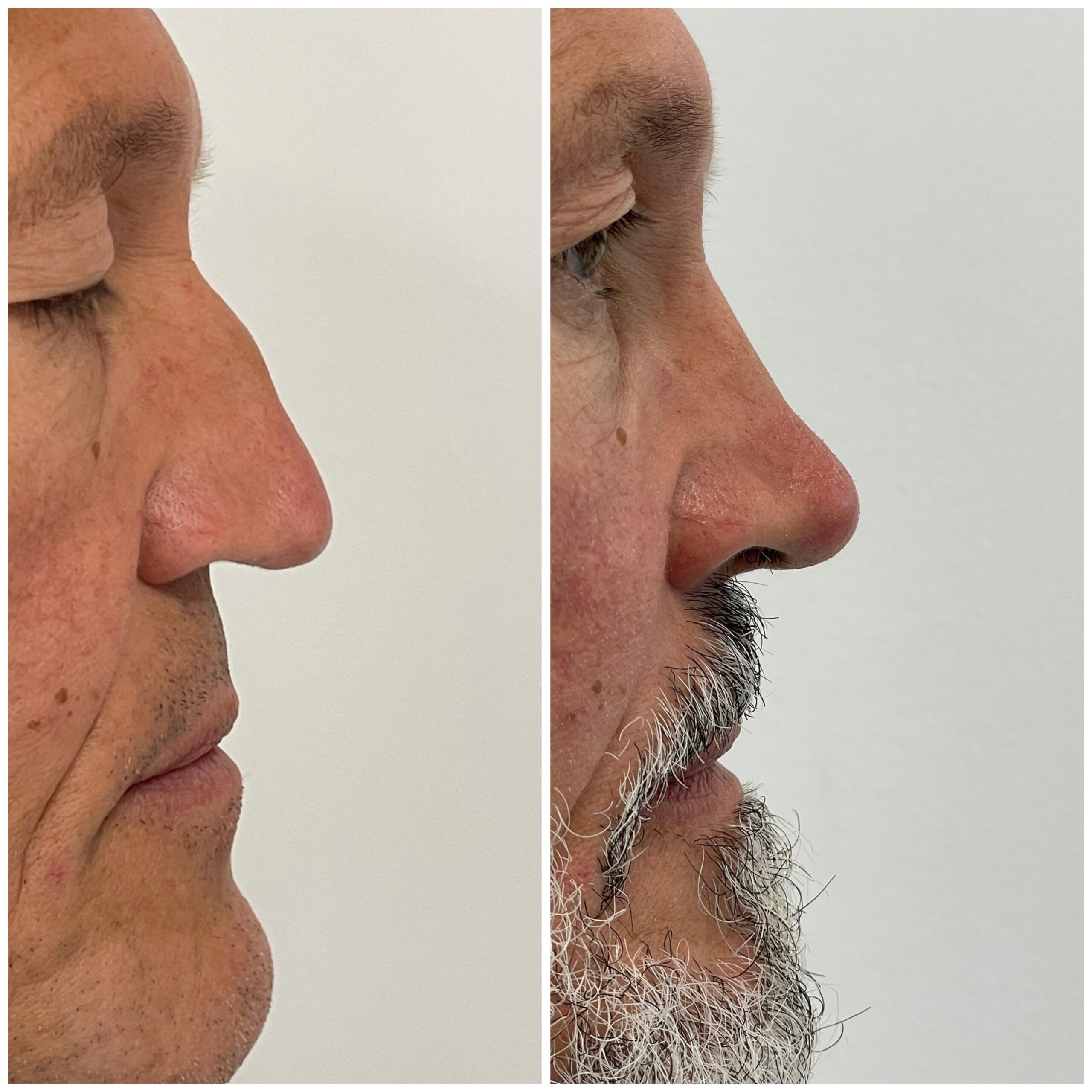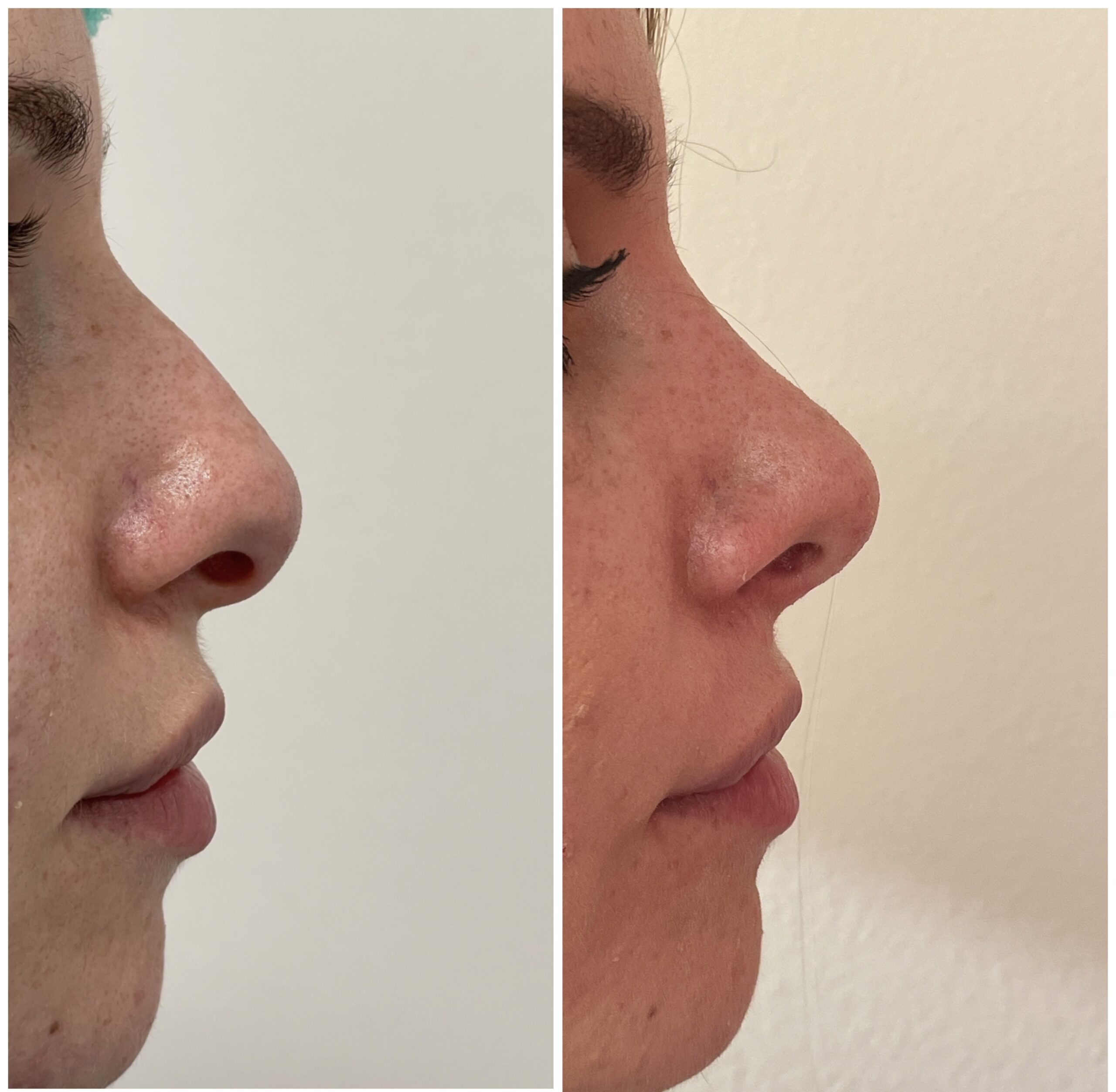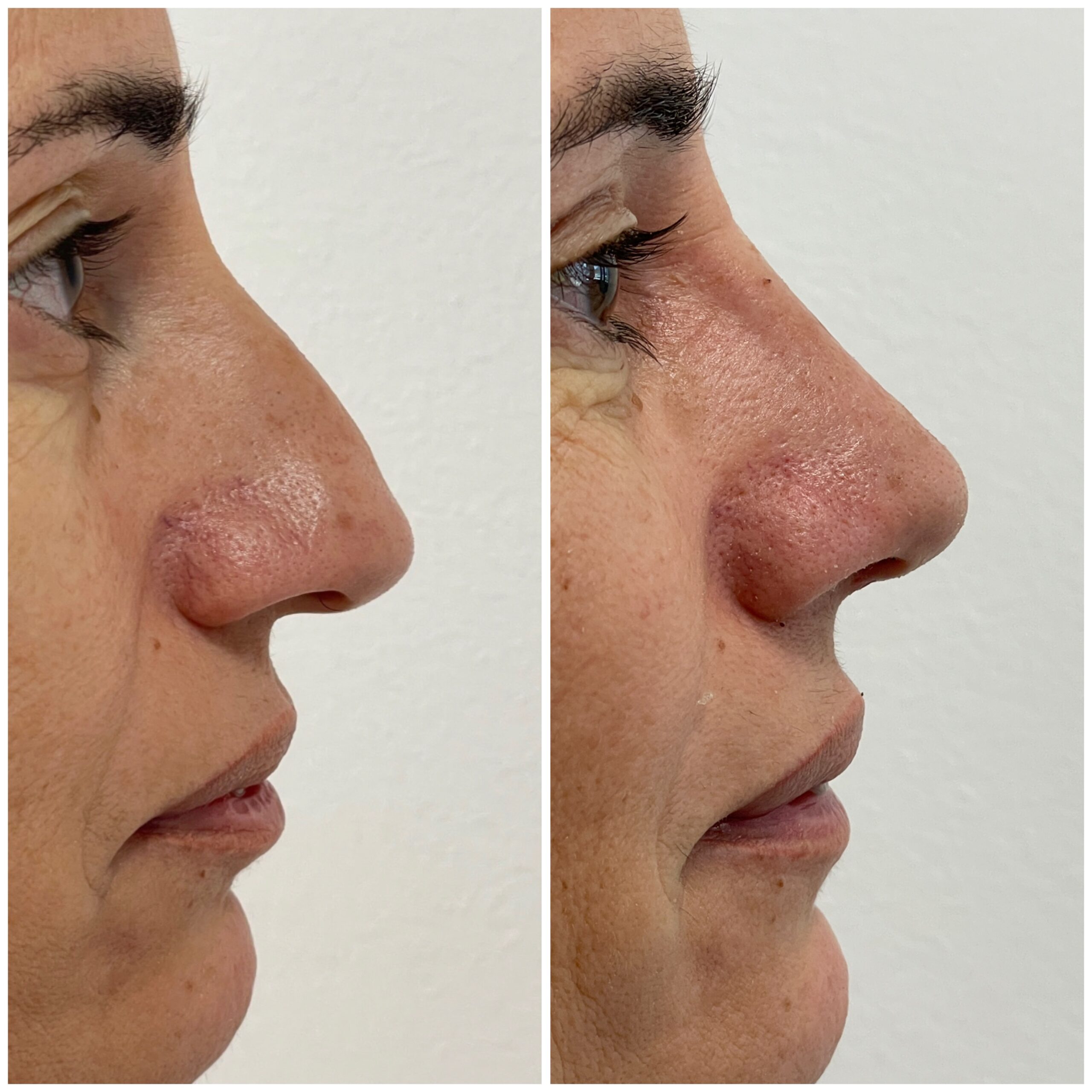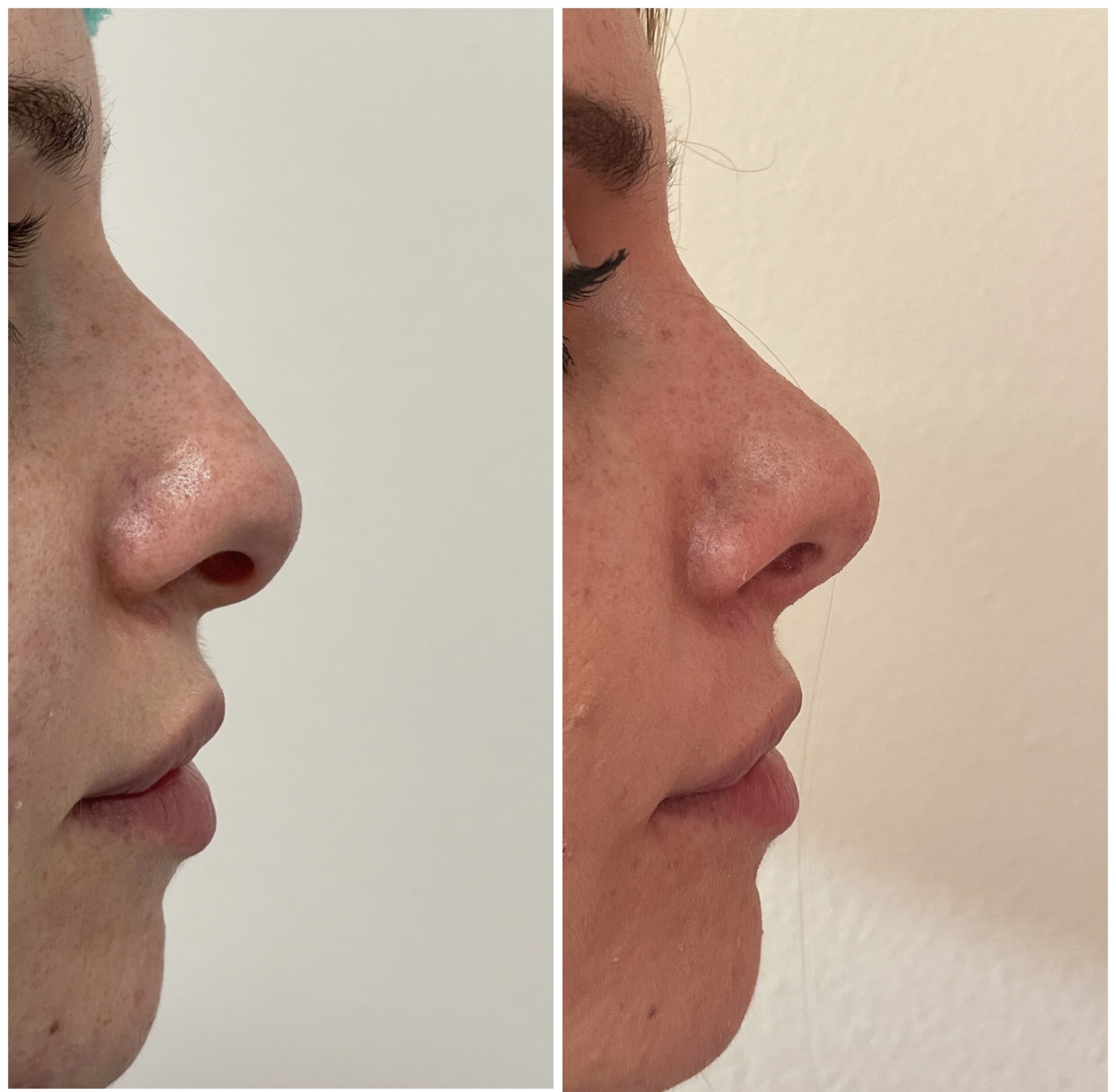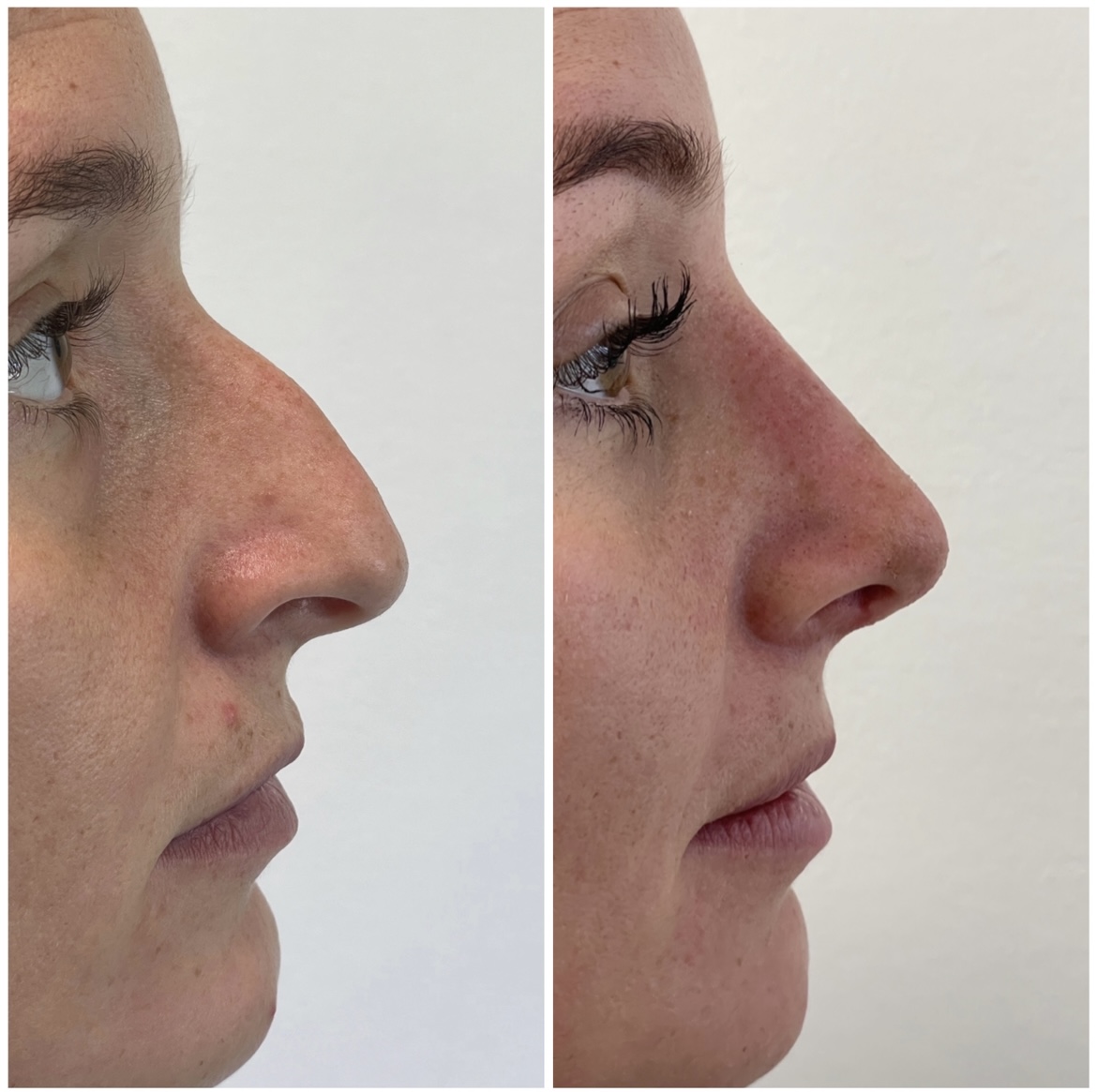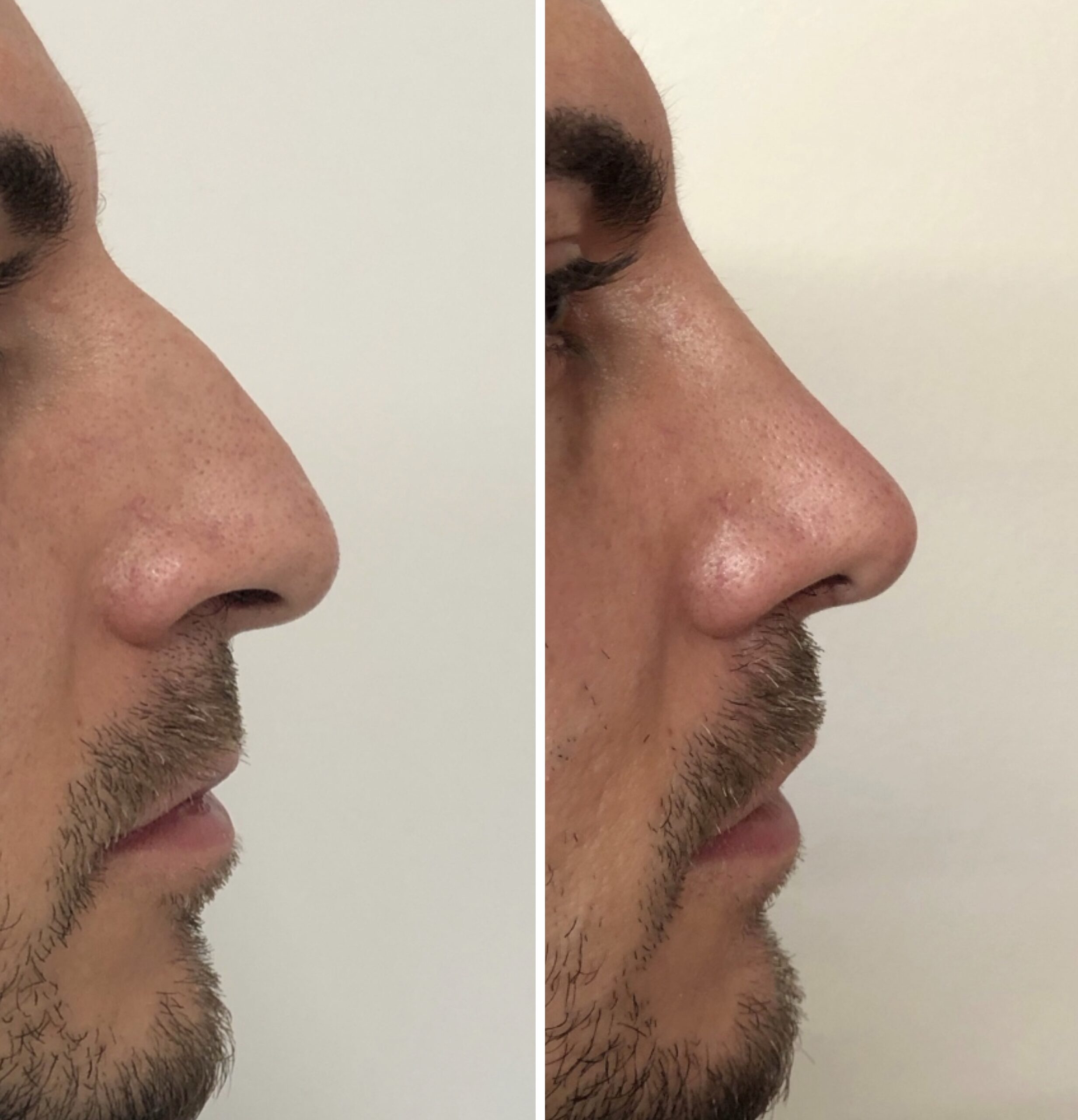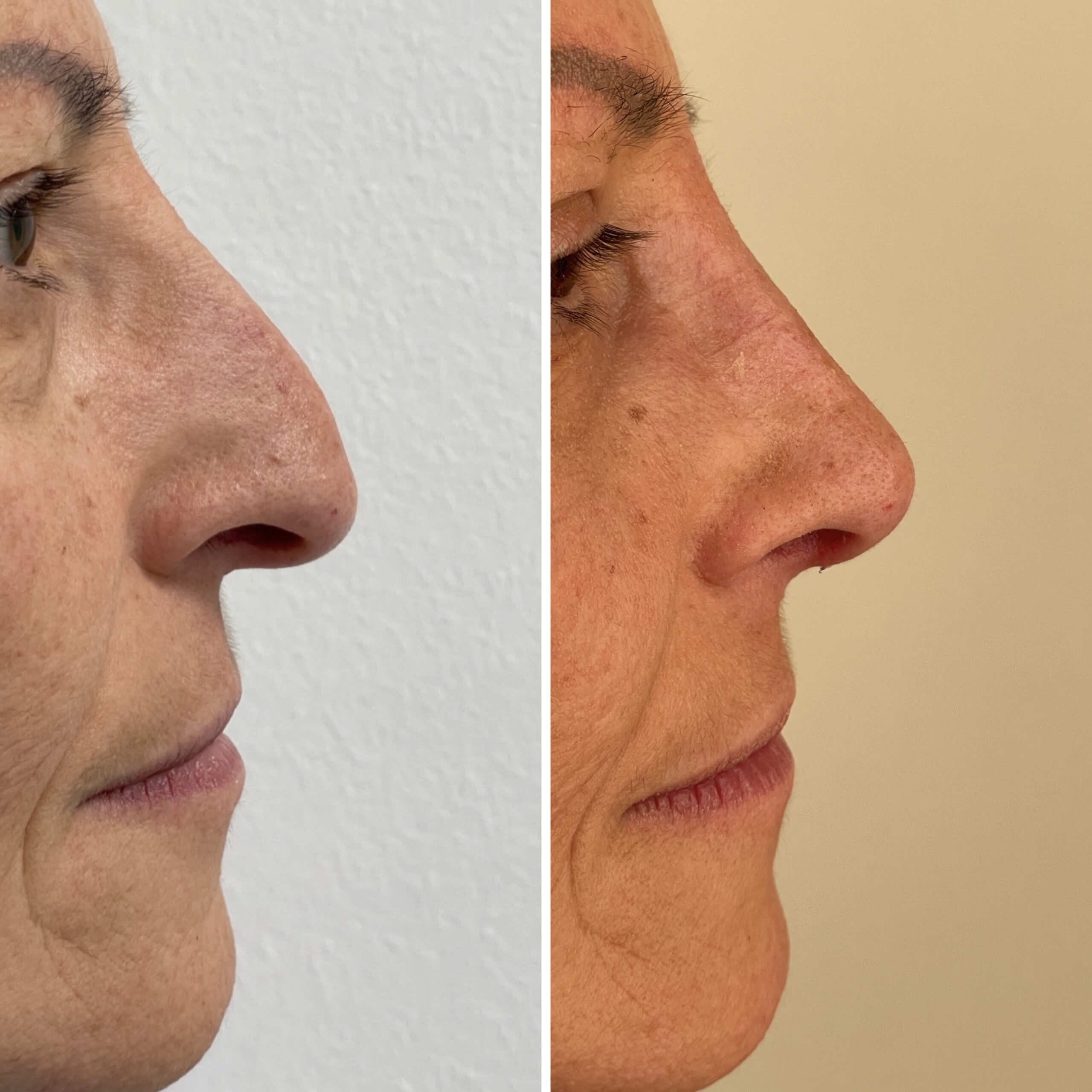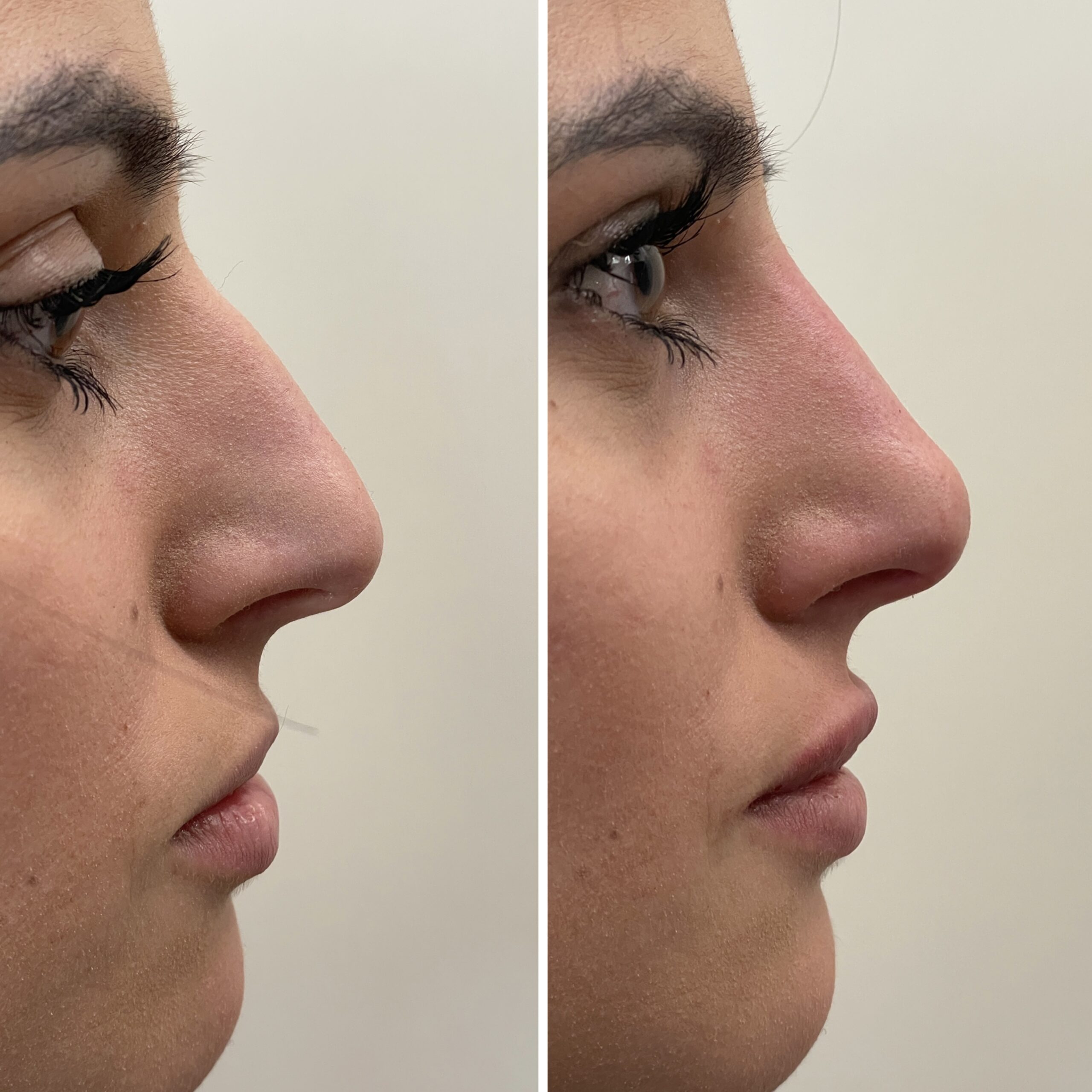Execution: 120 ′
Anesthesia: General or sedation
Discharge: Same day
Back to social life: 7 days
Healing (resuming all activities): 17 days

RINOPLASTIC OR SEPTOPLASTIC SURGERY
With a RHINOPLASTY, the nose’s imperfections concerning shape, volume and size can corrected. The bone and cartilage structures of the nasal pyramid are modeled and it is possible to correct the external appearance of the nose, the width or asymmetry of the tip, the size of the base, the columella and the nostrils.
SEPTOPLASTY improves respiratory function in case of marked deviations of the septum or hypertrophy of the turbinates.
Rhinoplasty and septoplasty are very often combined to correct both the aesthetic and respiratory aspects with a single intervention. It is often the case that patients with breathing difficulties (natural or acquired) also require an aesthetic improvement and vice-versa.
The approach can be with an open (open) or closed (close) technique and the best surgical choice must be well planned based on preoperative photos, patient needs and clinical objectivity. The scarring results are invisible in both cases.
The surgery must be planned on the ideal facial parameters applied to the face of each patient to respect shapes, sizes and volumes.
The result can never be stereotyped, on the contrary, they will be personal and they’ll be perfectly integrated with all the other features. The procedure is performed under general anesthesia or deep sedation and lasts less than 2 hours.
If (in rare cases) the issue to correct involves a limited and easily recognizable part of the nose, it is possible to proceed with a partial rhinoplasty, which only corrects the affected area and not the entire nasal structure. Cases of correction of the width and height of the tip or of small excesses of the hump are common. It is a less traumatic maneuver, with an even easier convalescence. It must be planned carefully but will give excellent results.
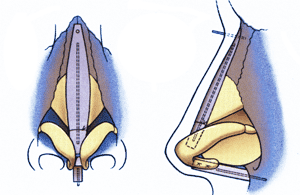
SECONDARY RHINOPLASTY
Secondary rhinoplasty is a procedure through which a nose that was previously operated on or one that has suffered a trauma (sports, or accidental) are acorrected to improve aesthetic and functional outcomes.
The surgical plan and the single steps strictly depend on the starting situation of the nose in question. A few small maneuvers dedicated to correcting single details may be enough, in some cases it is necessary to reconsider more complex steps to reach the goal.
Usually all secondary rhinoplasty are performed under general anesthesia or sedation using the “open” technique, which allows for greater access to the nasal structures.
POST-OPERATIVE COURSE
The patient can go back to work approximately 7-10 days after the operation.
For the first 12 hours the patient will have to wear two small nasal swabs. Contrary to popular belief, their removal is completely painless.
A thin aluminum plate is held in place on the bridge of the nose for the first 6 days. When the plaque is removed, a further modeling dressing is applied with thin patches on the back of the nose. The operation is performed with extremely delicate instruments, therefore the surgical trauma itself is very mild. Post-operative swelling is minimal and lasts no more than 3 days. At home, the patient won’t have to reapply special dressings, but it will be sufficient to wash them gently with specific products that will be recommended upon discharge.
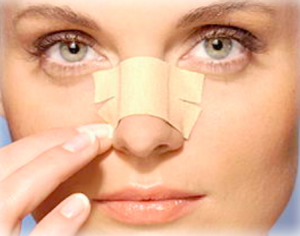
IL DR. MASSIMO CORSO CI PARLA DELLA RINOPLASTICA
GUARDA I VIDEO DEDICATI

